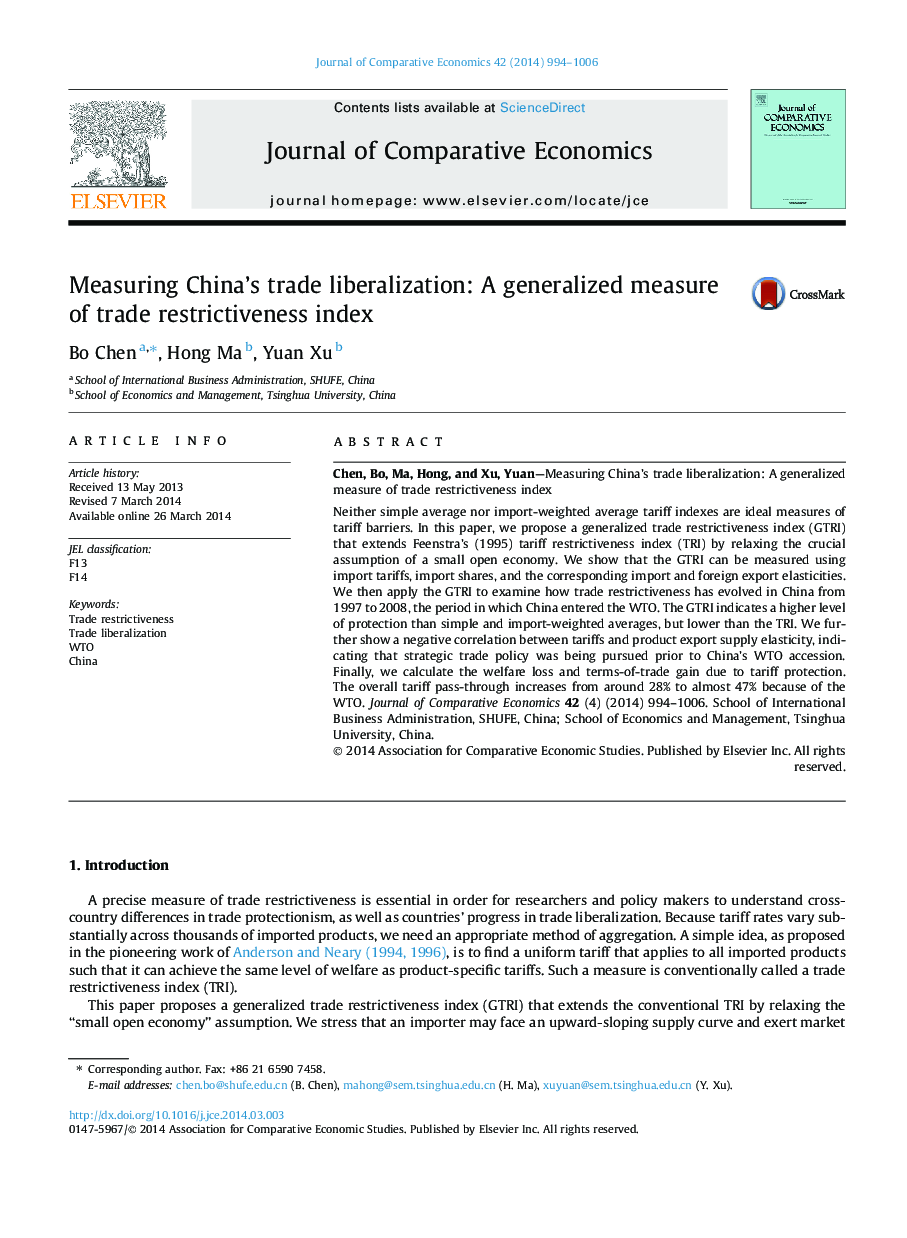| Article ID | Journal | Published Year | Pages | File Type |
|---|---|---|---|---|
| 5092324 | Journal of Comparative Economics | 2014 | 13 Pages |
â¢We generalize Feenstra's TRI by relaxing the assumption of a small open economy.â¢We show that our GTRI can be measured using tariffs, import shares, and trade elasticities.â¢We apply the GTRI to China during and after China's accession into the WTO in 2001.â¢GTRI indicates that China's tariff barrier surprisingly increased before 2002.
Neither simple average nor import-weighted average tariff indexes are ideal measures of tariff barriers. In this paper, we propose a generalized trade restrictiveness index (GTRI) that extends Feenstra's (1995) tariff restrictiveness index (TRI) by relaxing the crucial assumption of a small open economy. We show that the GTRI can be measured using import tariffs, import shares, and the corresponding import and foreign export elasticities. We then apply the GTRI to examine how trade restrictiveness has evolved in China from 1997 to 2008, the period in which China entered the WTO. The GTRI indicates a higher level of protection than simple and import-weighted averages, but lower than the TRI. We further show a negative correlation between tariffs and product export supply elasticity, indicating that strategic trade policy was being pursued prior to China's WTO accession. Finally, we calculate the welfare loss and terms-of-trade gain due to tariff protection. The overall tariff pass-through increases from around 28% to almost 47% because of the WTO.
